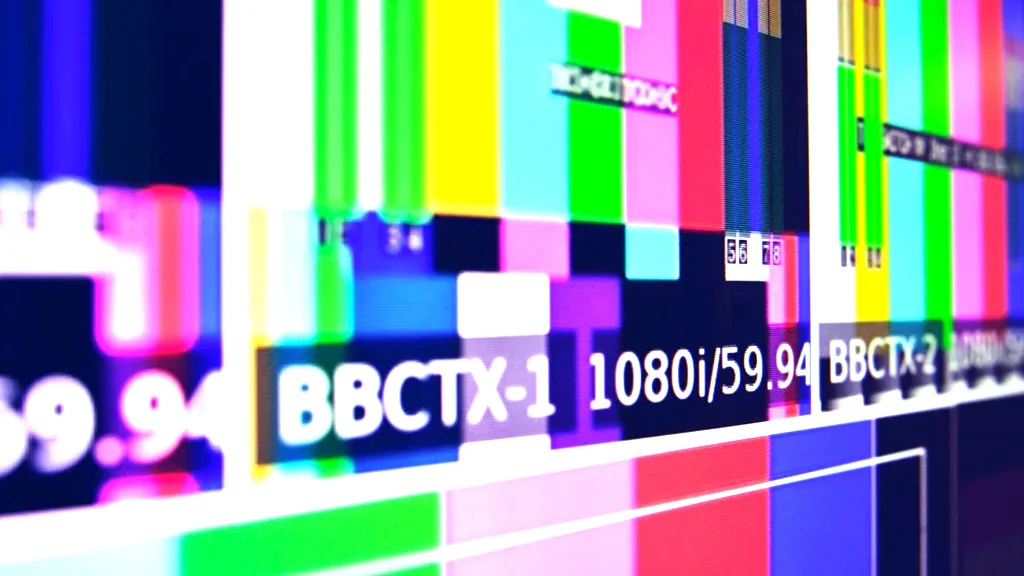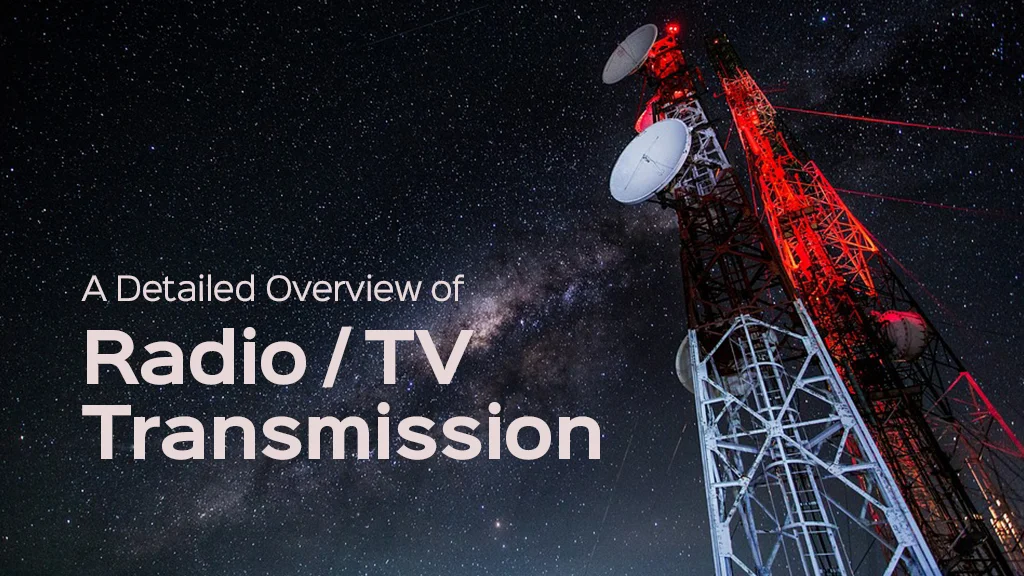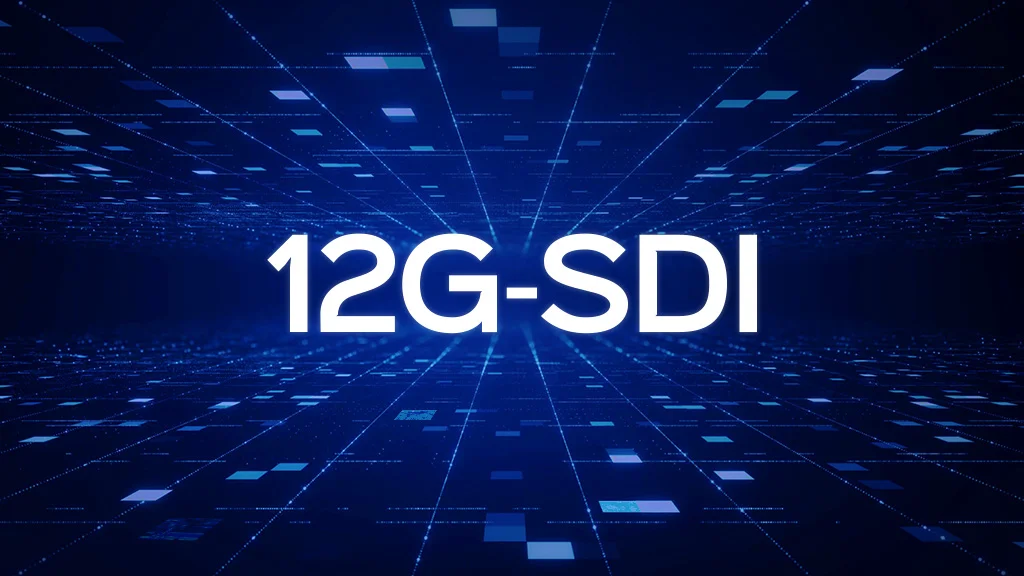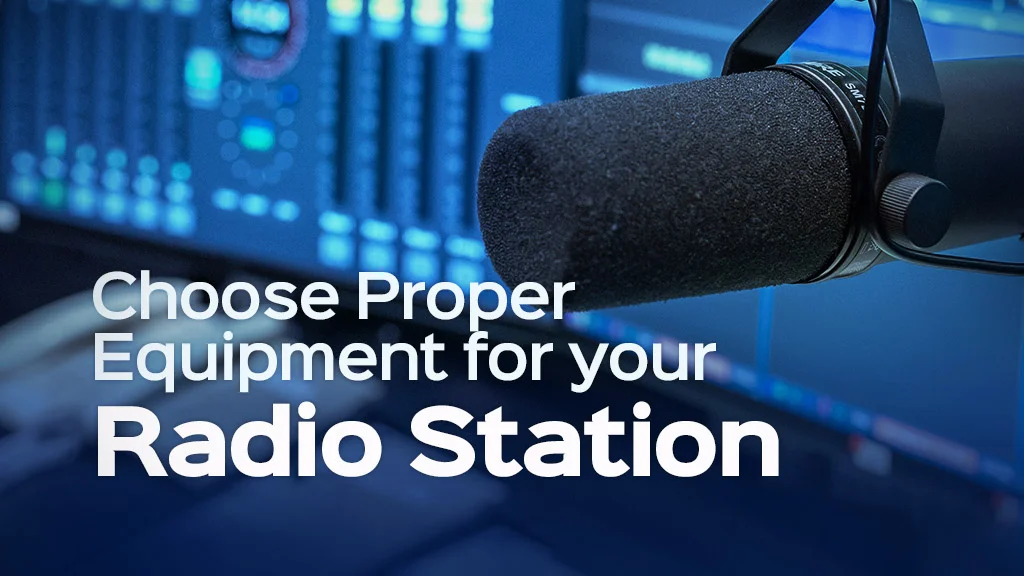
- Academy
TV Broadcast Standards: How They Revolutionized Television
From the earliest days of television in the 20th century, TV broadcast standards have served as a fundamental driving force in the development, evolution, and global influence of this medium. These standards are a set of rules and protocols that define various aspects of television signals, including image resolution, frame rate, color, and audio. This blog explores a brief history of Analog TV Broadcast Standards, digital standards, and IP-based standards. The aim is to understand how these standards have influenced the TV viewing experience and facilitated the transition to new technologies.
Brief History of the Analog TV Broadcast Standards
The push for standardization of TV broadcasting dates back to the 1930s and 1940s when early television systems were being developed. Initially, individual countries or regions tended to use their specific standards, leading to compatibility issues and difficulty in exchanging programs.
NTSC (National Television System Committee): NTSC was the first significant television standard introduced in the United States in 1941. It utilized 525 scan lines and a frame rate of 30 frames per second. This standard was widely adopted in North America, Japan, and several other countries. NTSC gained popularity due to its simplicity and lower cost; however, it was susceptible to issues such as color shifting.
PAL (Phase Alternating Line): Developed in Europe in the 1960s, the PAL broadcast standard was created to address some of the limitations of NTSC, particularly issues related to color transmission. PAL utilizes 625 scan lines with a frame rate of 25 frames per second. This standard was widely used in many European countries, Australia, and parts of Asia. Compared to NTSC, PAL offered improved color stability and overall picture quality.
SECAM (Sequential Color with Memory): SECAM is another standard developed in France in the 1960s. It also utilizes 625 scan lines and a frame rate of 25 frames per second but employs a different method for encoding color information. SECAM was primarily used in France, Eastern Europe, and some African countries. While SECAM offered more robust color transmission than its counterparts, it was considered more complex to implement.
Digital TV Broadcast Standards
As technology advanced, digital standards replaced analog. Digital TV broadcast standards refer to the technical specifications and protocols used to transmit television signals digitally. These standards ensure compatibility and quality across different devices and regions. Here are the leading digital TV broadcast standards around the world:
1. ATSC (Advanced Television Systems Committee)
Region: The ATSC broadcast standard is primarily used in the United States, Canada, Mexico, and South Korea.
Features: Supports high-definition (HD) video, surround sound audio, advanced data services, and interactive features.
2. DVB (Digital Video Broadcasting)
Region: Widely used in Europe and parts of Asia and Africa.
Variants:
DVB-T (Terrestrial): For over-the-air broadcasts.
DVB-S (Satellite): For satellite television.
DVB-C (Cable): For cable television.
Features: Supports standard-definition (SD), HD, and Ultra HD content, as well as interactive television services.
3. ISDB (Integrated Services Digital Broadcasting)
Region: Used in Japan and parts of South America (like Brazil).
Features: Allows broadcasting of multiple programs in one channel, mobile TV services, and interactive features. Supports both terrestrial and satellite broadcasting.
4. DTMB (Digital Terrestrial Multimedia Broadcast)
Region: Primarily used in China.
Features: Integrates different broadcasting formats and supports multi-channel audio and video services.
5. ATSC 3.0
Region: The next-generation standard in the U.S. and South Korea.
Features: Supports 4K ultra-HD, HDR (High Dynamic Range), enhanced audio, and internet connectivity for advanced services and interactivity.

IP-Based Broadcast Standards
IP-based Television Standards are protocols and technologies that enable the delivery of television and audio content over Internet Protocol (IP) networks. This approach allows for greater flexibility, scalability, and integration with modern digital services compared to traditional broadcasting methods. Here are some key IP-based Television Standards:
1. IPTV (Internet Protocol Television)
Description: IPTV delivers television content over a managed, high-bandwidth IP network. It typically requires a set-top box or compatible device.
Key Features:
- On-demand content and live TV streaming
- Interactive services
- Quality of Service (QoS) management for reliable streams
2. OTT (Over-the-Top)
Description: OTT services deliver media content directly over the Internet without a traditional cable or satellite subscription.
Examples: Netflix, Hulu, and Amazon Prime Video.
Key Features:
- Direct distribution to consumers
- Broad device compatibility (smart TVs, smartphones, tablets, etc.)
- Variable quality depending on internet speed
3. HTTP Live Streaming (HLS)
Description: Developed by Apple, HLS is a media streaming protocol that breaks streams into small segments for adaptive bitrate streaming.
Key Features:
- Supports live and on-demand content
- Adaptive streaming based on the viewer’s bandwidth
- Broad compatibility across devices and platforms
4. Dynamic Adaptive Streaming over HTTP (DASH)
Description: An international standard (ISO/IEC 23009) that allows for adaptive streaming of multimedia content over HTTP.
Key Features:
- Similar to HLS, allows for dynamic adjustment of video quality
- Open standard, interoperable across various devices
- Supports multiple codecs and packaging formats
5. SRT (Secure Reliable Transport)
Description: An open-source transport protocol developed to deliver high-quality, low-latency video over the Internet.
Key Features:
- Error recovery and security through encryption
- Works over unreliable networks
- Designed for live streaming applications
6. RTP/RTSP (Real-time Transport Protocol / Real-Time Streaming Protocol)
Description: RTP is used for delivering audio and video over IP networks, while RTSP manages streaming media sessions.
Key Features:
- Suitable for live and on-demand streaming
- RTP handles the transport, while RTSP controls playback
7. WebRTC (Web Real-Time Communication)
Description: A technology that enables peer-to-peer audio, video, and data sharing directly between browsers without a plugin.
Key Features:
- Low-latency communication is ideal for real-time applications (like video conferencing)
- Supports adaptive streaming and NAT traversal
IP-based Television Standards are significantly transforming the media landscape. These technologies provide innovative and flexible methods for content delivery, enabling better access and enhanced user experiences. From IPTV and live streaming to advanced protocols like HLS and DASH, these standards allow content creators and consumers to take advantage of high-quality video, simultaneous viewing, and interactive services.
This trend ensures that content reaches users quickly and, with ongoing technological advancements, it is expected that this type of broadcasting will become increasingly popular.
Samim Products, Compatible with Broadcast Standards
Samim products are designed to meet the evolving needs of the broadcasting industry, providing reliable solutions compatible with various broadcast standards. Here’s a look at the benefits of using Samim products:
1. Reliability
High-Quality Performance: Samim products like Routers, Distributors, TS Multiplexer , Embedders, and De-Embedder, undergo rigorous testing to ensure they operate flawlessly in various conditions, providing uninterrupted streaming and broadcasting.
Consistent Operation: Designed for high efficiency, these products minimize downtime, allowing broadcasters to maintain a continuous and high-quality output.
2. Compatibility with Broadcast Standards
Multi-Standard Support: Samim products are designed to be compatible with multiple broadcast standards. This versatility makes them suitable for use in broadcasting and different scenarios.
Seamless Integration: They can easily integrate with existing broadcasting systems, making upgrades and transitions smooth and cost-effective.
3. Future-Proof Solutions
Adaptable to Emerging Technologies: With the rapid advancement of broadcasting technologies, Samim products are built to adapt to new Television Standards ensuring longevity and relevance in a fast-evolving landscape.
Scalability: As demands grow, Samim products can be expanded or upgraded easily to meet increasing viewer expectations without compromising quality.
4. User-Friendly Interface
Intuitive Design: Samim products feature user-friendly interfaces that simplify operation, making it easier for broadcasters to manage their content and services effectively.
Comprehensive Support: With extensive documentation and responsive customer service, users can quickly resolve issues and optimize the use of their Samim products.
5. Enhanced Features
Advanced Encoding and Streaming: Equipped with the latest technology, Samim products provide advanced encoding options that improve streaming quality, reduce latency, and support adaptive bitrate streaming.
Customizable Solutions: Depending on specific broadcasting needs, Samim products can be customized to deliver unique functionalities, enhancing overall performance.
6. Cost-Effectiveness
Competitive Pricing: Offering high-quality products at competitive prices makes Samim an attractive option for broadcasters looking for value without sacrificing performance.
Lower Operational Costs: By ensuring reliability and compatibility, Samim products can reduce operational issues and associated costs over time.
Choosing Samim products means investing in dependable, compatible, and future-proof Live Broadcast Solutions for broadcasting needs. Their commitment to quality and innovation enables broadcasters to deliver exceptional content while maintaining the flexibility to adapt as the industry evolves.









